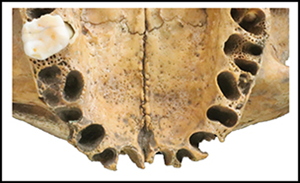Published online by Cambridge University Press: 01 October 2020

Intentional facial disfigurement is documented in archaeological contexts around the world. Here, the authors present the first archaeological evidence for intentional facial mutilation from Anglo-Saxon England—comprising the removal of the nose, upper lip and possible scalping—inflicted upon a young adult female. The injuries are consistent with documented punishments for female offenders. Although such mutilations do not appear in the written record until the tenth century AD, the instance reported here suggests that the practice may have emerged a century earlier. This case is examined in the context of a wider consideration of the motivations and significance of facial disfigurement in past societies.